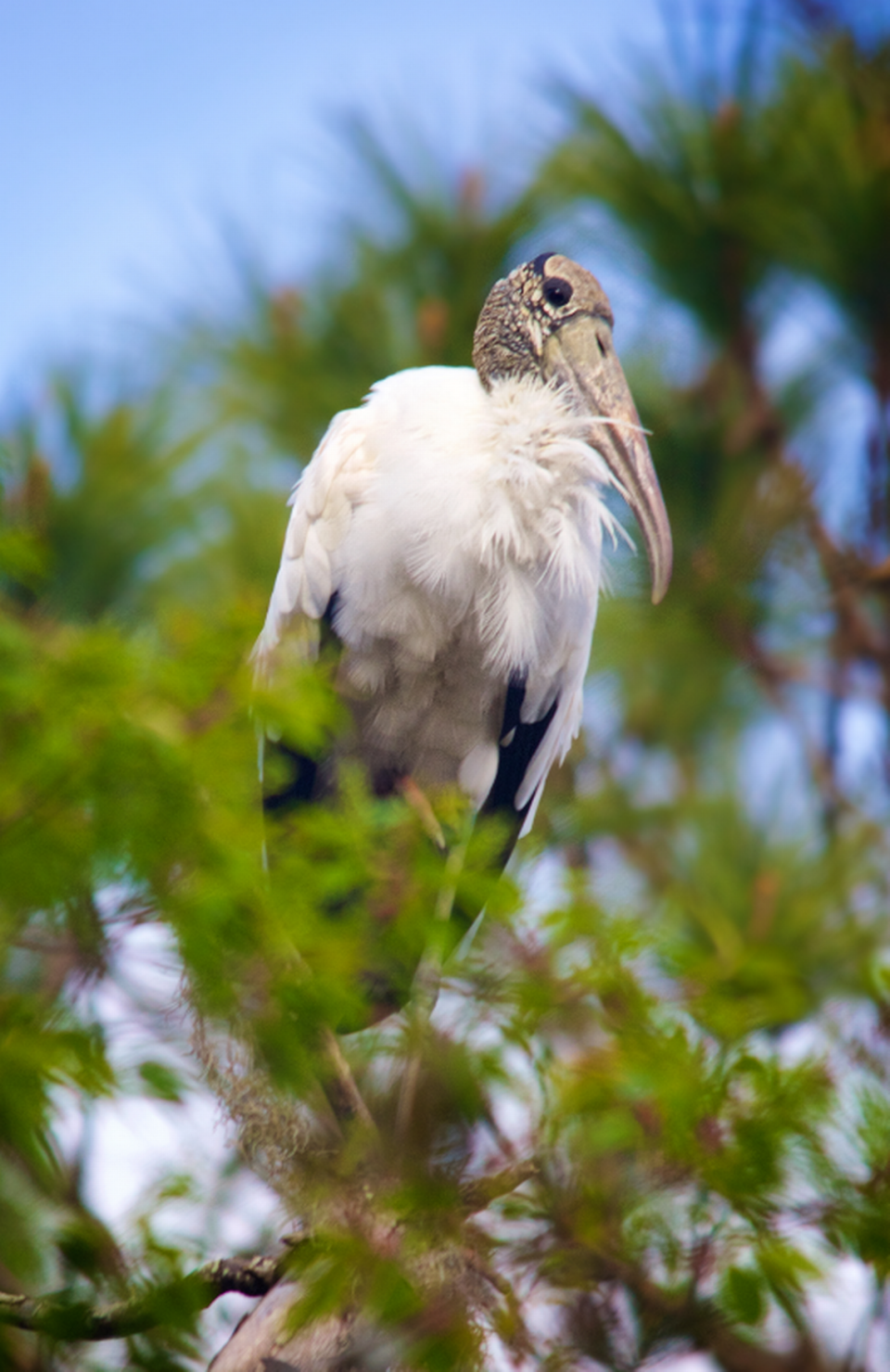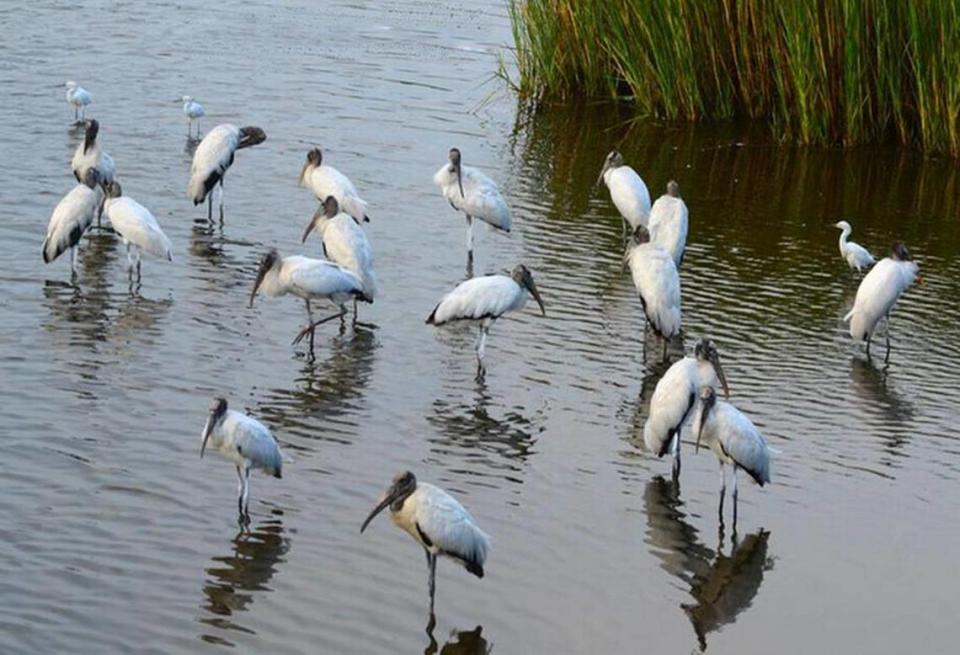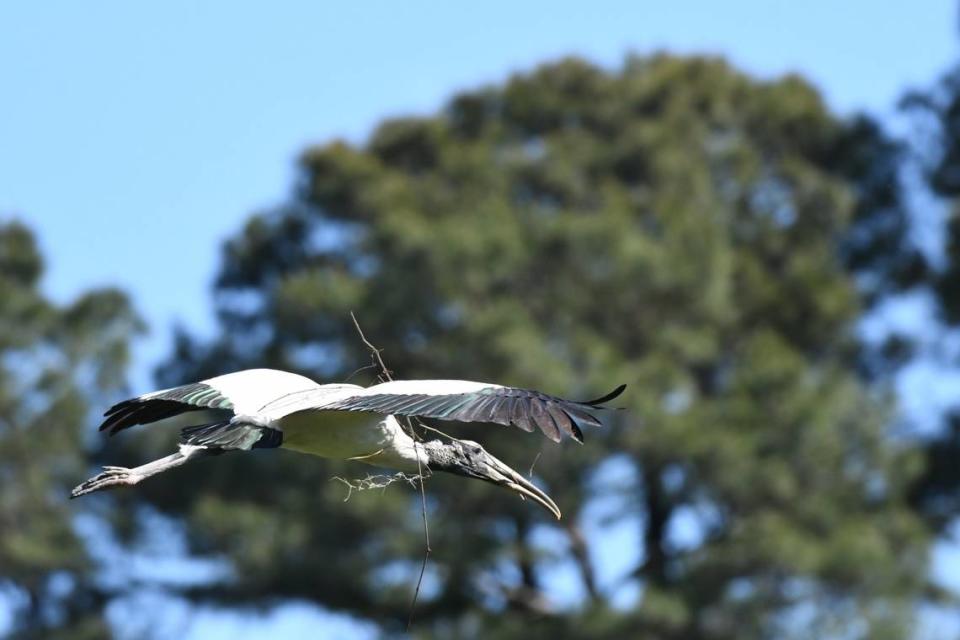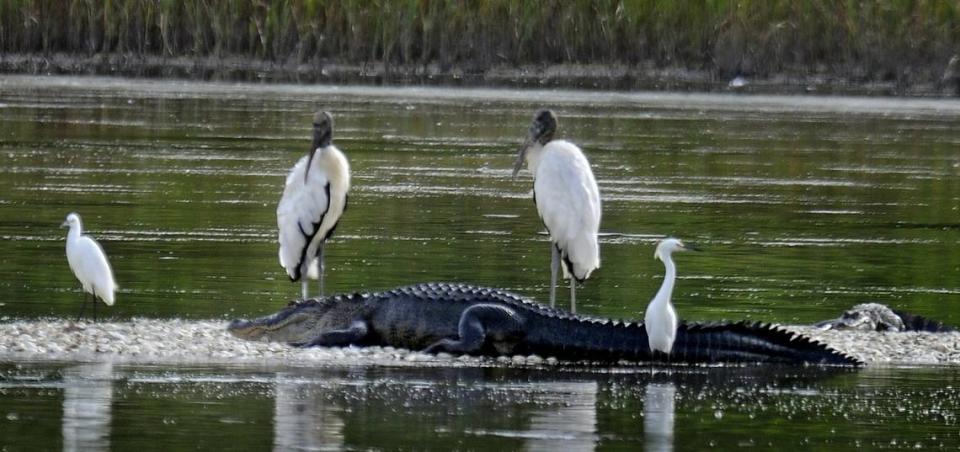Have you ever noticed these huge white birds with scaly-looking heads in SC? Here’s what to know
Have you ever seen any wood storks in South Carolina?
Wood storks, Mycteria americana, are large wading birds with distinctively bald heads and long, down-curved bills, which helps to make them easily recognizable.

These birds are some of the largest wading birds in South Carolina, standing over one meter tall and with a wingspan of 60 inches, and are the only species of stork that reside in the United States, according to the South Carolina Department of Natural Resources.
They are entirely white in color with the exception of their black flight feathers and tail. Meanwhile, their entire head and neck area remain unfeathered and scaly-looking.

Generally, these storks are found along coastal wetlands, marshes and swamps.
Primarily, they eat fish and other aquatic invertebrates, but sometimes ingest seeds, amphibians, nestlings, and reptiles, detailed All About Birds.

Although they have been established as exceptional fliers, they find their prey by walking slowly through wetlands with their bill in the water. And when several are feeding together in a group, they will shuffle their feet to stir up fish from their hiding places.

The daily food intake of an adult is about 1 pound of fish, continued SCDNR.
Wood storks will build 3-5 foot wide nests in trees or shrubs above standing water in nearby marshes and wetlands. There, the female will lay a clutch of about one to five eggs where they will sit for approximately 50-55 days.

Although they are not generally very vocal birds, when they are around their nest adults may make low croaking sounds to communicate.

